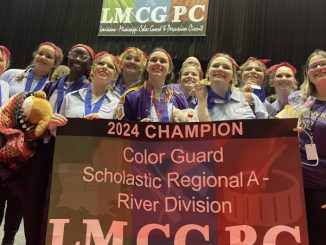
A geographer from the University of Georgia, Matthew Mitchelson, has come up with an interesting statistic, as reported on CNN: there are at least 777 streets in the U.S. named for slain civil rights leader Martin Luther King.
Naming a street in someone’s honor is a superlative example of respect and admiration—in other words, an individual has really “arrived” when a street bears his name.
The street-naming trend may be an indication that we are closer than you might realize to achieving King’s dream of a color-blind society.
The fact that hundreds of streets bear King’s name show that public officials throughout the nation recognize the contributions of King and they are determined to honor them.
Interestingly enough, 85 percent of the streets named for King are in the South. Surprised? You really shouldn’t be.
The South is hardly the cauldron of racial tension the media would have you believe.
If the South is paying more homage to King than the North is, it’s a clear indication that the media stereotypes of the typical white male Southerner are hopelessly faulty.
According to CNN, Southern homage to King ranges from MLK Circle in Tupelo, Mississippi, to MLK Boulevard in Tampa, Florida.
And there’s another significant stereotype that needs to be shattered: the idea that neighborhoods bearing a Martin Luther King street are filled with crime and poverty. As Matthew Mitchelson, that University of Georgia geographer, pointed out to CNN, “The dominant stereotype is that these are crime-ridden, low-income areas that are just full of blight.”
However, the March issue of Social Science Quarterly clearly shows that the stereotype just isn’t true.
As Mitchelson told CNN, “In terms of employment, Martin Luther King streets are actually much more vibrant than streets in general.”
In fact, Martin Luther King streets, on average, offer more work addresses than that symbol of American enterprise, Main Street.
In fact, MLK thoroughfares are brimming with schools and government offices, causing Mitchelson to remark to CNN, “Statistically, it’s off the charts.” What’s more, Martin Luther King streets are far from symbols of segregation. In Cincinnati, Ohio, Martin Luther King Drive winds through neighborhoods that are white, black, and evenly populated.
One Martin Luther King street in Seattle, Washington, boasts a number of businesses owned and operated by Asian-Americans.
Liberals would like us to believe that there have been virtually no advancements for African-Americans since the 1960s.
This is because politicians, both white and black, can use the “politics of oppression” to keep their jobs. They attempt to win black votes by claiming that the state of affairs for blacks in America are worse than ever—and that they will be the welcomed agents of change.
But a lie cannot stand for long. Everyday in America, whites and blacks work, dine, and play together side by side.
They judge one another not according to skin color, but by the content of their character—the very thing that Martin Luther King preached.
It’s time to end the politics of division and racial strife. Those who’ve never gotten mentally past the 1960s need to let go of the past.
America is the preeminent example of a land of opportunity – and that’s true no matter what your race or ethnic background.
If you doubt that, just take a drive along a street dedicated to the memory of Dr. King.




Be the first to comment